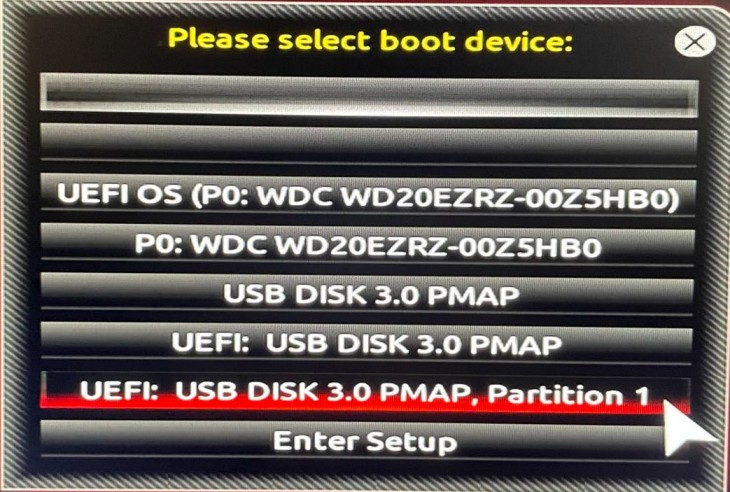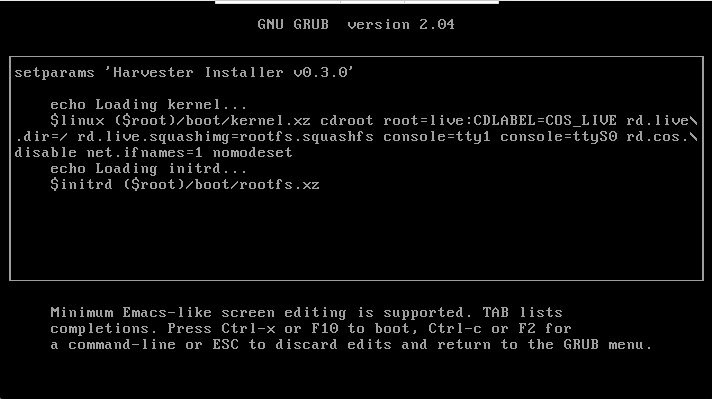USB Installation
Create a bootable USB flash drive
There are a couple of ways to create a USB installation flash drive.
balenaEtcher
balenaEtcher supports writing images to USB flash drives. It has a GUI and is easy to use. Select the Harvester installation ISO and the target USB device to create a USB installation flash drive.
dd command
On Linux or other platforms that have the dd command, users can use dd to create a USB installation flash drive.
Make sure you choose the correct device. The process erases data on the selected device.
# sudo dd if=<path_to_iso> of=<path_to_usb_device> bs=64k
Common issues
When booting from a USB installation flash drive, a GRUB _ text is displayed, but nothing happens
If you are using the UEFI mode, try to boot from the UEFI boot partition on the USB device rather than the USB device itself. e.g.,

Select the UEFI: USB disk 3.0 PMAP, Partition 1 to boot. Note the representation varies from system to system.
Graphics issue
Firmwares of some graphic cards are not shipped in v0.3.0.
You can press e to edit the GRUB menu entry and append nomodeset to the boot parameters. Press Ctrl + x to boot.

Other issues
Harvester installer is not displayed
If a USB flash driver boots, but you can't see the harvester installer. You may try out the following workarounds:
- Plug the USB flash drive into a USB 2.0 slot.
- For version
v0.3.0or above, try to remove theconsole=ttyS0parameter when booting. You can presseto edit the GRUB menu entry and remove theconsole=ttyS0parameter.